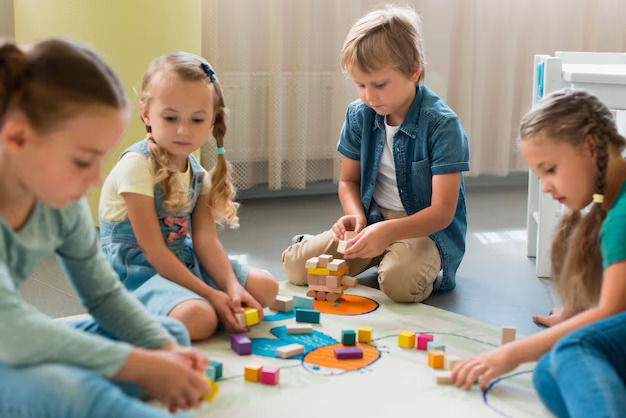The early years of a child's education play a crucial role in shaping their perception of the world around them. For many preschoolers, sensory experiences are a fundamental aspect of their daily interactions. Recognizing the significance of sensory development, the design and implementation of sensory-friendly environments in preschools have become increasingly essential. These spaces are crafted to accommodate the diverse sensory needs of young learners, fostering a supportive and inclusive atmosphere for their overall growth.
Understanding Individual Sensory Profiles:
The first key aspect of a sensory-friendly preschool environment lies in acknowledging and understanding the individual sensory profiles of each child. Sensory processing varies widely among children, and a sensory-friendly approach involves recognizing and respecting these differences. By observing how each child responds to various sensory stimuli, educators can tailor the environment to suit individual preferences, ensuring that all children feel comfortable and engaged.
Creating Calming Zones:
Preschools embracing sensory-friendly principles often incorporate designated calming zones within the learning spaces. These areas provide a retreat for children who may become overwhelmed by sensory input. Equipped with soft lighting, comfortable seating, and calming sensory tools, these zones allow children to self-regulate and manage their sensory experiences in a controlled and supportive environment.
Sensory-Appropriate Materials and Activities:
Integrating sensory-appropriate materials and activities is crucial in creating a rich and stimulating learning environment. Preschools can offer a variety of textures, colors, and shapes that cater to different sensory preferences. Playdough, sensory bins filled with rice or sand, and textured surfaces contribute to a diverse sensory experience. Additionally, incorporating activities that engage various senses, such as music, movement, and art, ensures a well-rounded and inclusive learning environment.
Visual Supports and Organization:
Visual supports and organizational strategies play a significant role in sensory-friendly preschools. Clearly defined spaces, visual schedules, and visual cues help children understand and navigate their environment. Visual supports not only enhance communication but also provide a sense of predictability, reducing anxiety for children who may be sensitive to unexpected changes in their surroundings.
Adaptable Seating and Flexible Classroom Layouts:
Sensory-friendly environments prioritize adaptable seating arrangements and flexible classroom layouts. Providing options like fidget tools, stability balls, or flexible seating allows children to choose the setup that best suits their sensory needs. This flexibility promotes a sense of autonomy and comfort, enabling each child to engage in learning in a way that suits their individual preferences.
Encouraging Sensory Exploration:
Preschools embracing sensory-friendly practices actively encourage sensory exploration as part of the learning process. Outdoor spaces with opportunities for nature-based sensory experiences, such as feeling different textures or hearing the sounds of the environment, contribute to a well-rounded sensory curriculum. By fostering a positive attitude towards sensory exploration, educators promote a holistic approach to early childhood development.

Read more : The Benefits of Early Childhood Education: Why Preschool Matters
Preschool Recommendation:
Consider enrolling your child in a preschool that prioritizes sensory-friendly environments. A preschool that understands and accommodates the diverse sensory needs of young learners provides a nurturing space where every child can thrive. Through thoughtful design, individualized support, and a commitment to inclusivity, such preschools contribute to a positive early learning experience that sets the stage for lifelong academic success and well-being.
Montessori Shir-Hashirim Los Angeles
Shir-Hashirim Montessori school has two different locations. The main location is on Carlton Way in Los Angeles. This school teaches children between the ages of 2 and 6 and prepares them for some of the top Montessori elementary schools in the city. Specifically, they offer a primary program and a summer program for preschool children.
At Shir-Hashirim, they allow their students to grow and learn both individually and within the community of the school. Students are able to learn at their own pace when it comes to both practical life skills and subjects such as math and language.
Shir-Hashirim Montessori has a parent-and-me program that is required for families who may enroll their child in the Montessori program.
Conclusion:
The key aspects of sensory-friendly environments in preschools revolve around recognizing individual differences, creating calming spaces, incorporating sensory-appropriate materials, utilizing visual supports, offering adaptable seating, and encouraging sensory exploration. By prioritizing these elements, preschools can cultivate inclusive learning environments that cater to the diverse needs of young learners, fostering not only academic growth but also the development of essential sensory skills. Embracing the principles of sensory-friendly design is an investment in creating a positive and supportive foundation for the early educational journey of every child.


